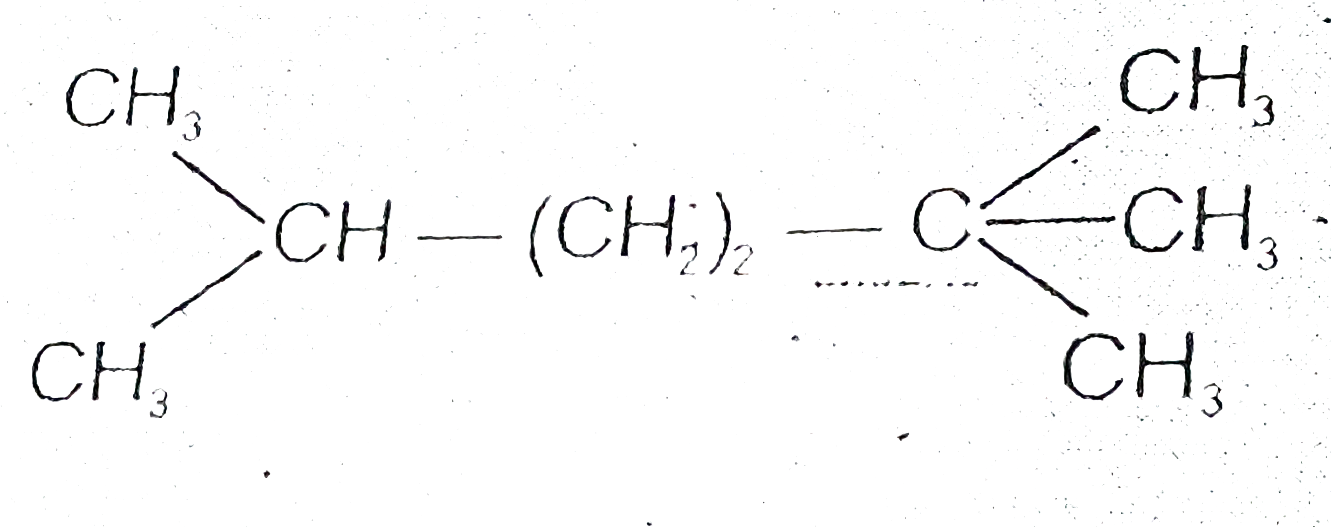Draw the structure of a carbonyl group and indicate :
the σandπ bonds.
To draw the structure of a carbonyl group and indicate the sigma and pi bonds, follow these steps:
Step 1: Draw the Carbonyl Group Structure
The carbonyl group consists of a carbon atom (C) that is double bonded to an oxygen atom (O). The general structure can be represented as follows:
O∣∣C
Step 2: Identify the Bonds
In the carbonyl group:
- The carbon atom forms a double bond with the oxygen atom.
- The double bond consists of one sigma (σ) bond and one pi (π) bond.
Step 3: Indicate Sigma and Pi Bonds
- The sigma bond (σ) is formed by the head-on overlap of orbitals. In the carbonyl group, the sigma bond is the first bond formed between the carbon and oxygen.
- The pi bond (π) is formed by the side-to-side overlap of p orbitals. In the carbonyl group, the pi bond is the second bond formed in the double bond between carbon and oxygen.
Thus, we can represent the bonds in the carbonyl group as follows:
O∣|C|R(whereRcanbeahydro≥na→mora¬hercarboncha∈)
- The bond between C and O is a double bond, which can be broken down into:
- 1 σ bond (single bond)
- 1 π bond (double bond)
Final Structure with Bonds Indicated
O∣∣C−−−R
- Here, the line between C and O represents both the sigma and pi bonds, while the line between C and R represents a sigma bond.
Summary of Bonds
- C=O: 1 σ bond + 1 π bond
- C-R: 1 σ bond
The carbonyl group consists of a carbon atom (C) that is double bonded to an oxygen atom (O). The general structure can be represented as follows:
In the carbonyl group:
- The carbon atom forms a double bond with the oxygen atom.
- The double bond consists of one sigma (σ) bond and one pi (π) bond.
- The sigma bond (σ) is formed by the head-on overlap of orbitals. In the carbonyl group, the sigma bond is the first bond formed between the carbon and oxygen.
- The pi bond (π) is formed by the side-to-side overlap of p orbitals. In the carbonyl group, the pi bond is the second bond formed in the double bond between carbon and oxygen.
- 1 σ bond (single bond)
- 1 π bond (double bond)
O∣∣C−−−R
- Here, the line between C and O represents both the sigma and pi bonds, while the line between C and R represents a sigma bond.
- C=O: 1 σ bond + 1 π bond
- C-R: 1 σ bond
Topper's Solved these Questions
- ALDEHYDES,KETONES AND CARBOXYLIC ACIDSBook:CBSE COMPLEMENTARY MATERIALChapter:ALDEHYDES,KETONES AND CARBOXYLIC ACIDSExercise:LONG ANSWER TYPE QUESTIONS (5 MARKS)
Explore 21 Videos
- ALDEHYDES,KETONES AND CARBOXYLIC ACIDSBook:CBSE COMPLEMENTARY MATERIALChapter:ALDEHYDES,KETONES AND CARBOXYLIC ACIDSExercise:SHORT ANSWER -I TYPE QUESTIONS (2 MARKS)
Explore 30 Videos
- ALCOHOLS, PHENOLS AND ETHERSBook:CBSE COMPLEMENTARY MATERIALChapter:ALCOHOLS, PHENOLS AND ETHERSExercise:LONG ANSWER TYPE QUESTIONS (5 Marks)
Explore 5 Videos
- AMINESBook:CBSE COMPLEMENTARY MATERIALChapter:AMINESExercise:5 MARKS
Explore 7 Videos
Similar Questions
Knowledge Check
Allyl cyanide contains σ and π-bonds:
A5σ,7πB9σ,3πC3sigm,4πD9σ,9πAllyl isocyanide contains σ and π bonds are-
A9σ and 3πB9σ and 9πC3σ and 4πD5σ and 7πAllyl isocyanide contains σ and π bonds, as
A9σ and 3πB9σ and 9πC3σ and 4πD5σ and 7π.
Draw the structure of a carbonyl group and indicate :
hybridized state of carbon .
View SolutionDraw the structure of a carbonyl group and indicate :
the electrophilic and nucleophilic centres
View SolutionDraw the structure of a carbonyl group and indicate clearly
(i) the hybridised state of carbon,
(ii) the σ and π it bonds present and (iii) the electrophilic and nucleophilic centres in it.
View SolutionDraw the bond line structure for

View SolutionDistinguish between a sigma and a pi bond.
View Solution